| Banks Making Big Profits From Tiny Loans |
|
|
|
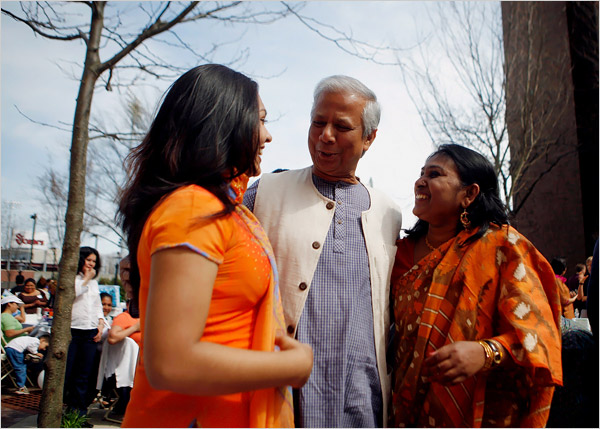 |
| Muhammad Yunus, middle, is an economist who pioneered the
practice of microloans by lending small amounts to basket weavers in
Bangladesh. He won a Nobel Peace Prize for the service in 2006. Microlending
has grown so popular that some of its biggest proponents are now wringing
their hands over the direction the industry has taken. Photo: Eric
Thayer/Reuters |
|
|
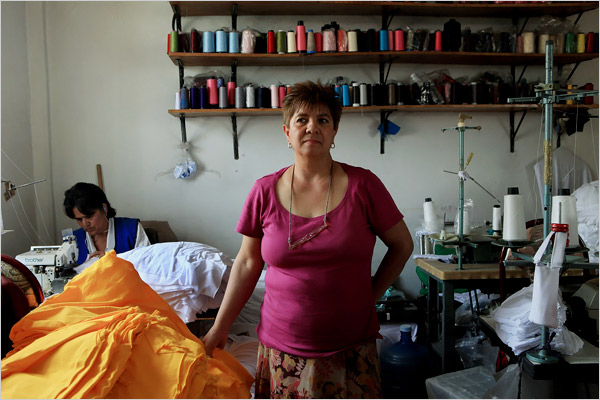 |
| Drawn by the prospect of hefty profits from even the
smallest loans, a raft of banks and financial institutions now dominate the
field, with some charging interest rates of 100 percent or more from their
impoverished customers. In Mexico City, Maria Vargas has borrowed larger and
larger amounts from Compartamos, a Mexican firm, over the last two decades
to expand her T-shirt factory to 25 sewing machines from five. Photo:
Adriana Zehbrauskas for The New York Times |
|
|
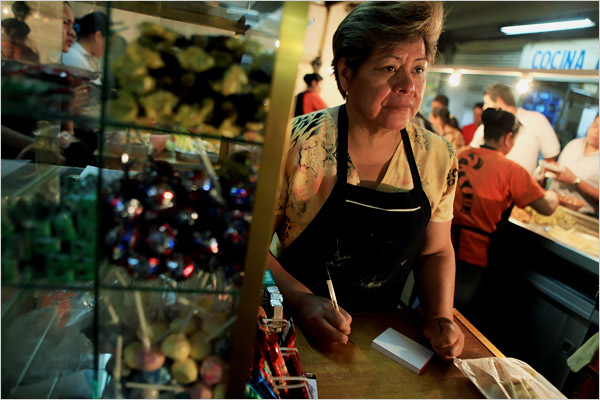 |
| Rosa Gonzalez Abad got her first microloan from Compartamos
10 years ago. Today, she employs five people. |
|
|
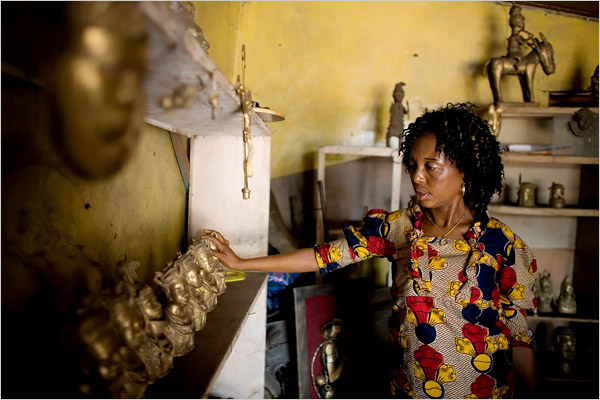 |
| Rose Ewere's store in Benin City, Nigeria, is financed by a
loan from LAPO. Under outside pressure, LAPO announced in 2009 that it was
decreasing its monthly interest rate, noted Planet Rating, an independent
Paris-based firm that evaluates microlenders. At the same time compulsory
savings were quietly raised to 20 percent of the loan from 10 percent. So,
the effective interest rate for some clients actually leapt to nearly 126
percent annually from 114 percent, the Planet Rating report said. |
|
|
|
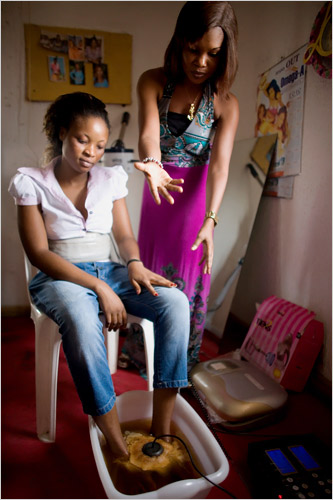
|
| Aminat Olawole, right, explaining a treatment to a client
at her salon, Fortune Skin Care, in Benin City, Nigeria. Ms. Olawole
received a third loan in December 2009. Many companies say the highest rates
reflect the costs of reaching the poorest, most inaccessible borrowers. |
|
|
 |
| Samuel Ighagbon watching employees at his piggery. He has
defaulted several times on loans from LAPO. The overriding question facing
the industry, analysts say, remains how much money investors should make
from lending to poor people, mostly women, often at interest rates that are
hidden. |
|
|
|
|
|
|
|





